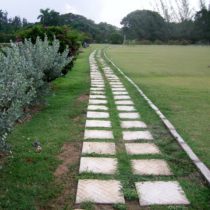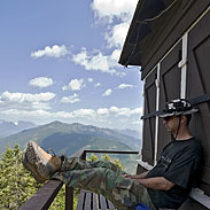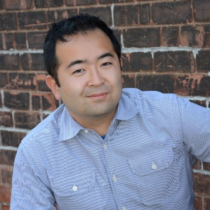Landscape Architecture for Landscape Architects › Forums › GENERAL DISCUSSION › Portfolio for entry to MLA programme
- This topic has 1 reply, 5 voices, and was last updated 12 years ago by
 Deena.
Deena.
-
AuthorPosts
-
April 9, 2012 at 1:32 am #157977
 DeenaParticipant
DeenaParticipantIm considering applying to a MLA programme at UBC, but I do not have a BSc with a design background. Do you guys have any tips on what type of pieces I should consider putting in this portfolio??
April 9, 2012 at 1:53 am #157987 DeenaParticipant
DeenaParticipantI have read it thanks, I’m still keeping an open mind about pursuing that career path, as I consider other areas.
April 10, 2012 at 8:02 pm #157986 Chris WhittedParticipant
Chris WhittedParticipantPerhaps this is a different UBC than you were referring to, but the admissions requirements page seemed to have an extensive and open list of examples:
“Creative works may include but are not limited to projects/work that you have designed, created or constructed [e.g., sketching, painting, sculpture, photography, drawing, printmaking, pottery, dressmaking, woodworking, gardening, poetry]. In general, a creative work may be anything you feel best demonstrates your creativity.”
The examples do not have to have a professional/work background – they can be personal or hobby related. They also do not have to currently exist. You can make a few new sketches or take some photos or create a fake magazine cover or make up anything you like. For those who do not come from art and design backgrounds, this kind of portfolio is often the creative project itself rather than a collection of past works. It is as much about presenting the information as what the information is.
April 10, 2012 at 9:41 pm #157985 Tosh KParticipant
Tosh KParticipantAny creative work, writing, 2d/3d art, photography, digital works; key is to show potential, attention to craft and sensitivity. I put a lot of sketches/drawings and photography along with a few design projects from an intro studio. As Chris mentioned, the composition of the portfolio is as important as the content.
April 10, 2012 at 11:43 pm #157984Anonymous
InactiveThey like to see process to show the thinking behind an idea. A good reference is the book “the Architects Portfolio: Planning, Design, Production.” By Andreas Luescher. Helped a lot with layout ideas. Check out graphic design websites for more layout ideas.
If you have no art background at all you could take a class at a community college/adult education to get some material together. I didn’t have enough variety in my portfolio so I took a ceramics class at an art center to make some 3d stuff to include in my portfolio. You can’t learn ceramics quickly, but I think it made me look versatile and experimental. Both qualities that are good/necessary to have as a LA.
Also I found some of the best students in my MLA program were from non-design backgrounds i.e Psychology, history, environmental science etc. It’s really about the way you think first then how to convey your ideas visually and verbally.
April 11, 2012 at 7:04 am #157983Brian Y
ParticipantNot sure if Trish from UBC’s admiss sent you this, but you may find this useful. Also, it’s a bit lengthy and I’m too lazy to edit it down.
Thoughts on the Portfolio portion of a UBC Architecture application…
The portfolio is the most important element of an application to the UBC
Architecture and, in all likelihood, any school of architecture. Of course one
must have a decent transcript and letters of reference but at the time of
application the transcript is a fixed document and letters of reference usually are
very favorable. In trying to assess which applicant would have the best chance
of succeeding and would make the best contribution to his or her colleagues
most insight can be gained from the portfolio. It is in our interest and the
interests of all applicants that we get to see the best portfolios possible so we
are not making choices based on whether or not applicants know what we are
looking for. For that reason it makes sense to be explicit about the context and
possibilities without, in any way, being prescriptive.
All too often applicants consider the portfolio to be a collection of the
work they did in their qualifying degree. This is especially a problem in the case
of Fine Arts or undergraduate design backgrounds. If your previous degree is in
Geological Engineering you are less likely to fall into that trap. We see the
charcoal nudes, pottery, welded wire sculpture and First Nations Museums on
the bend in the river and too often little else. Those things should be included
certainly and give valuable insight into the applicant’s skill levels and the nature
of the qualifying degree programs but say little about the applicant’s relationship
to or interest in the many aspects of architecture. Also the transcript is a good
measure of what qualified judges think of that body of work.
Let’s oversimplify architecture in two major components, say the in-tray
and the out-tray for want of better terms. The seeing, understanding,
questioning, analysing, experiencing side of the field is where it all starts, the in-
tray. The out-tray is the product of the design or creative process and that is
usually what is evident from the material referred to above. The important thing
needed to establish your attitude towards the study of architecture is your in-
tray side. What matters to you that relates in some way to your desire to
engage with the shaping of the physical environment? Is it just for the money
or what else can I do with is Fine Arts degree and 90% in physics? Probably
not, but we can’t tell from the beautiful watercolour and the physics mark. Of
course your statement of intent will tell us what you are thinking but far more
effectively your portfolio can show who you are. The important thing here is
what is the subject of the water colour and why did you do it, why is it in the
portfolio and how does it contribute to your overall attitude towards the world
you find yourself in. If it is skillfully represented, so much the better but there is
so much more potential than that. You could include some of your photography
for example. We don’t care too much about any given photo but more what it
says about the person looking through the viewfinder when the shutter released.
Why did they take the photo, why did they include it in this body of work, what
does it say about this person’s relationship with ideas architects consider
important? For instance what can we tell from a photo of, say, the Eiffel Tower?The person has been to Paris. That’s about it. What about a photo of the way a
leg of the Eiffel tower meets the ground? Now there are possibilities. Are the
pieces bolted or riveted together? How many coats of paint have been applied
and what about the attitude of Paris City Hall in terms of maintenance? Is there
anything mediating between the steel of the tower and the ground, a plinth you
can sit on say or do you have to lean against the structure? Is there anyone
sitting or leaning? What kind of ground is there anyways? Smooth, rough, dark,
light, worn cobble stones, new granite pavers or asphalt? Any litter, graffiti,
grass growing in a crack, struggling to survive? Etc? Many biographical
statements declare that the applicant has travelled and that is good for the study
of architecture. True, but when there is nothing in the portfolio that sheds any
insight on the contribution the travel made to that person’s relationship to
architectural ideas they would be better off not mentioning the travel in the first
place. If you’ve been to China and don’t have anything to share about the rows
of parked bicycles, crowded streets, flat barbequed ducks, doors, windows,
roofs, stairs, laundry, ancient pagodas and their intricate parts, spaces between
buildings and little old people raking leaves then surely you only think you want
to study architecture.
Aside from exploring your in-tray potential you should include any of your
creative or constructed works that are outside your formal education. That could
include music, literature, furniture, craft, construction or anything that has a
creative component even though it may not relate directly to architecture. For
example, if you worked one summer in the Arctic and made a kayak out of whale
bone and walrus hide we want to see a picture of the kayak. A recent portfolio
sent in by an applicant who spent a summer fighting a major forest fire in British
Columbia included a series of photos that conveyed drama, heat, exhaustion,
danger, commitment, broken dreams, fruitless effort and bravery all on two
pages. How fighting forest fires relates to architecture is totally dependent on
how you look at fighting forest fires and how you communicate that.
As for CDs, DVDs, and websites, you might use that format, particularly if
the material warrants that kind of submission, ie, it is actually aural or visual
activity, but you should also have the representation in your paper format
portfolio as well. The paper format should be a stand alone and as
comprehensive as possible. While most members of the admissions committee
are happy to plug in their laptops, the set up of the Admissions material does
not always lend itself to an admissions computer dedicated for the purpose. And
it takes time, and frankly, not everyone sets up those CDs so that they play in a
universal environment – or worse files of individual photos need to be opened
one at a time. I can go on and on – and you can probably hear some of the
frustrations from our last admissions go around. So for the digital – yes, include
it. Make sure it is adequately represented in the paper portfolio, and do
everything to keep frustration level down and make it very easy on the person
viewing the material!
The context. Your portfolio will be reviewed by 2 students and 2 facultywho sit on a committee of 4 and 4 of each. The job is far bigger than anyone
would like (the students are volunteers) as there are around 280 applications to
be processed. It quickly becomes obvious that our main goal is to get the job
finished and it serves your purpose and ours that it not take too long for us to
have a clear opinion. This not to say that we are in any way cavalier about the
process – we feel it is a very important task as it will result in the school that will
be. We’re very serious about that. How this effects you is that you recognize
that reality and design your portfolio accordingly. It is your first UBC
Architecture design project with clarity being the operative word. You can see
that it is not just a bunch of work stuffed into a portfolio format. It has the
responsibility of communicating who you are and why we would be foolish to
leave you out of our next year’s incoming class.April 11, 2012 at 7:06 am #157982Brian Y
ParticipantAlso, my portfolio that got me into UBC’s MLA program had 2 arch projects, 1 urban design project, 1 wood sculpture, a few paintings/drawings, a few photographs, 1 super 8 film, and 1 spread of sketches.
April 11, 2012 at 4:01 pm #157981 DeenaParticipant
DeenaParticipantThanks, this will be helpful !
April 11, 2012 at 4:01 pm #157980 DeenaParticipant
DeenaParticipantThanks a lot.
April 11, 2012 at 4:02 pm #157979 DeenaParticipant
DeenaParticipantOk Thank you.
April 11, 2012 at 4:04 pm #157978 DeenaParticipant
DeenaParticipantThanks much!!
-
AuthorPosts
- You must be logged in to reply to this topic.

